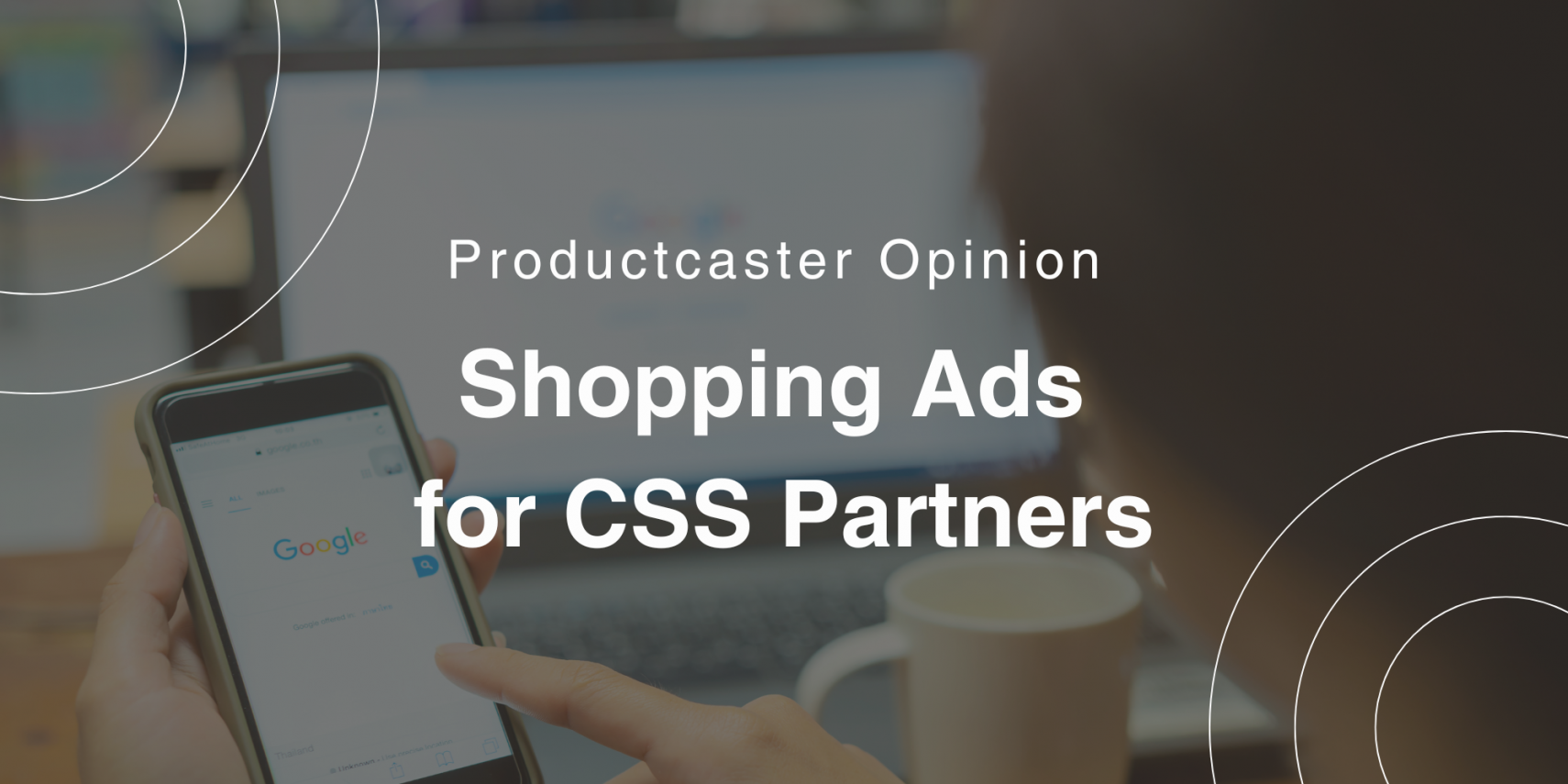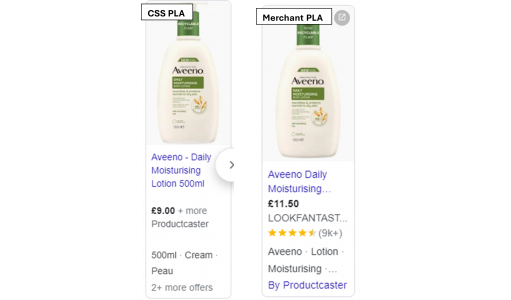Latest
Productcaster Opinion: Shopping Ads for CSS Partners

Google has recently introduced a big change to its Shopping Ads auction within the SERP (Search Engine Results Page) and CSSs can now drive traffic to their own PDPs (Product Detail Pages) rather than directly to merchant pages. Google have made these changes to ensure they remain compliant with the new DMA ruling.
Read on to find out more about these changes and Productcaster’s opinion on our CSS PLA trial.
What are the changes to Google Shopping Ads?
- CSS product listing ads (CSS PLAs)
CSS PLAs are a new format where ads are placed by CSSs rather than just merchants. When users click on these ads, they are directed to a product detail page on the CSS comparison site instead of the merchant’s site. This change aims to provide more visibility to CSSs and reduced dominance by Google Shopping.

- Organic product detail pages (Organic PDPs)
These are organic search results that link to product detail pages hosted by CSSs or retailers. This move is designed to give more organic traffic opportunities to CSSs, levelling the playing field between Google’s own services and third-party providers.
- Changes to rich results and shopping tab
The traditional shopping tab has been replaced with ‘Products’ sections. The rich results have a new visual in the SERP which includes free listings and CSS listings, to distribute traffic more evenly among various service providers. This shift is intended to present a more balanced range of options to users.
Why were the changes made?
The main driver for these changes is the enforcement of the Digital Markets Act (DMA) (and their more recent Article 6(5) on March 6, 2024), which ensures fair competition and equal access for all businesses operating within the digital market.
Due to the rules applied to the Gatekeepers, a group of CSS providers asked the EU to step in and ensure Google met their responsibilities regarding fairness in the Shopping space. For Google to guarantee that their practices do not unfairly favour their own services over their competitors, they made these changes to the SERP.
Productcaster’s CSS PLAs trial
As one of the top 5% of CSSs, Productcaster was part of the small group that were allowed to test the new CSS PLAs prior to full rollout. Productcaster tested the new ad format in two territories: UK and France.
What is the difference between CSS PLAs and merchant PLAs?
Usually, when you click on a merchant PLA you are taken to the merchant’s site and the relevant PDP (unless you click on the “by Productcaster” or equivalent in which case it does take you to a results page on the CSS site). Within a merchant PLA, there is one product and one price. A CSS PLA is distinguishable from a merchant PLA, as there are multiple prices displayed within each product ad. Clicking on a CSS PLA directs users to product detail pages within the CSS comparison site.
What were the pros and cons of CSS PLAs?
CSS PLA Pros
- Additional traffic to Productcaster CSS comparison site
- Fairer access to Google Shopping carousel
- Offers shoppers the opportunity to compare more prices within a single ad
- Provides more choice for shoppers
CSS PLA Cons
- Higher bounce rates within the comparison site as it becomes an unexpected extra step in the user journey
- Poor user experience – most users expect to land on a merchant page where they can purchase the product – not the case when they land on the CSS comparison site
- CSS partners seen as competing with their own clients – merchant ads and CSS ads appear next to each other in the shopping carousel
Our Productcaster Opinion
At Productcaster CSS, our focus is driving the best performance for our merchants at the most efficient cost. While we saw increased traffic to the Productcaster CSS site during our trial, these customers were not expecting to come to a Productcaster page, they were expecting to go to a merchant page. This ultimately added an additional step in the user journey and lead to a decline in click out rate to our merchants – which detracts from the seamless customer journey and efficient performance we want to drive for clients.
We will continue to participate in organic CSS results and improve free listing strategies, but won’t be implementing paid CSS PLA ads.
The recent changes to Google’s SERP reflect a significant shift towards more equal digital market practices and while these changes come with their challenges, they also present new opportunities for CSSs and merchants alike. At Productcaster, we aim to strategically test and learn, ensuring that we continue to provide top-tier service and value to our clients.
Productcaster can help your business navigate these changes and optimise Google shopping ads. For more information email us at info@productcaster.com.
Ready for change? Let's talk
Speak to Summit